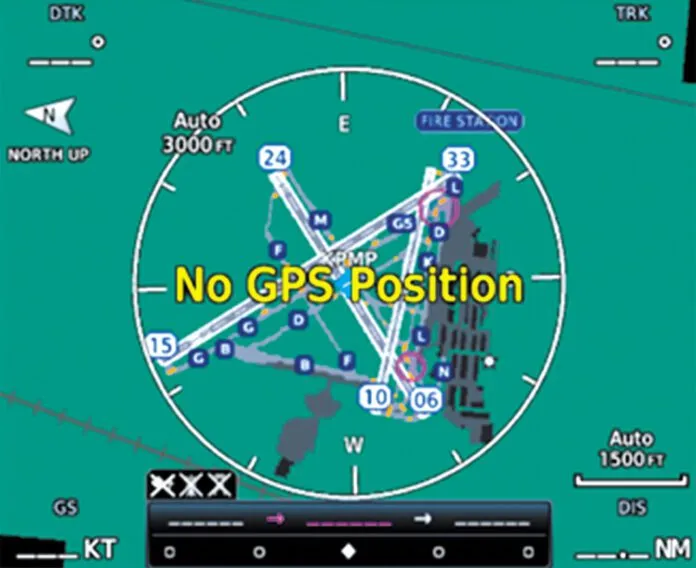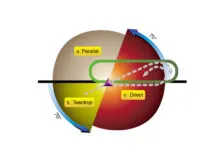Routinely, my two GPS navigators will lock onto GPS satellites within a few minutes once powered up. But not this time. Both indicated LOI (loss of integrity), implying that the GPS satellites were insufficient. This was confirmed when no satellites appeared on the GPS Status pages. With the failure in two separate units, a failure in the airplane was unlikely. I suspected some systemic GPS problem.
Curiouser and Curiouser
Once I taxied perhaps 100 yards beyond the FBO, the satellites came alive one-by-one. Since I remain well practiced in VHF nav, and it was a local flight, I continued.
The flight was uneventful, and when I taxied back to the hangar, I again lost GPS reception. Shortly after, a bizjet landed on Runway 15. I asked them if they had any GPS issues. They said they lost GPS on the roll-out. Jokingly, they said: “We don’t do green needles,” referring to VHF nav sources instead of RNAV. I had a fleeting flash of “green eggs and ham.”
 I told Tower of the GPS issue, and the controller told me that a King Air just taxied back to the ramp citing “avionics problems.” I then suspected an errant signal from a nearby maintenance hangar as the cause. I advised the FBO of a probable GPS issue nearby the FBO and filed a report at: “Report a GPS Anomaly.”
I told Tower of the GPS issue, and the controller told me that a King Air just taxied back to the ramp citing “avionics problems.” I then suspected an errant signal from a nearby maintenance hangar as the cause. I advised the FBO of a probable GPS issue nearby the FBO and filed a report at: “Report a GPS Anomaly.”
Apparently, my report resulted in an FCC visit to the maintenance hangars. The shop has a GPS antenna on the roof with an amplifier and a re-radiating antenna inside to test GPS with aircraft in the hangar. The system is always on. Then, another company temporarily brought a similar system into the hangar and the problems began.
Takeaways
Would you be like the King Air crew and just taxi back, or are you prepared to navigate using non-GPS sources?
Depending on where you fly, planned military GPS interference is either common or rare, and might or might not be properly announced. Consequently, we all should be prepared to navigate without GPS, instead using ground-based VHF nav (the green needles).
Even when we fly VHF approaches (ILS/LOC, VOR), best practice tells us to load them into our navigator for situational awareness. But, could we fly the entire approach and missed without loading the approach, without that moving map?
A review of MON (Minimum Operational Network) might be beneficial.
We take GPS for granted, assuming it’ll always be there, but it’s a good practice to verify the navigator’s integrity before departure.
Each GPS navigator announces loss of satellites differently. Garmin’s GTNs prominently announce the loss on the map page, and there’s also a small indication along the bottom status bar.
Of course, if you go to your system GPS status page, you’ll see an insufficient number of satellites (or none) with adequate signal strength.
It’s increasingly common for panel upgrades to eliminate VHF navigation. While this might be good economics for a mostly-VFR aircraft, I believe no aircraft regularly flying in IMC—and flying approaches in IMC—should be without VHF nav.
While Luca Bencini-Tibo was still at the airport that day, his car was parked in the FBO parking lot. He got a call from his automobile dealer, suggesting his car might have been stolen since the GPS was off line.





